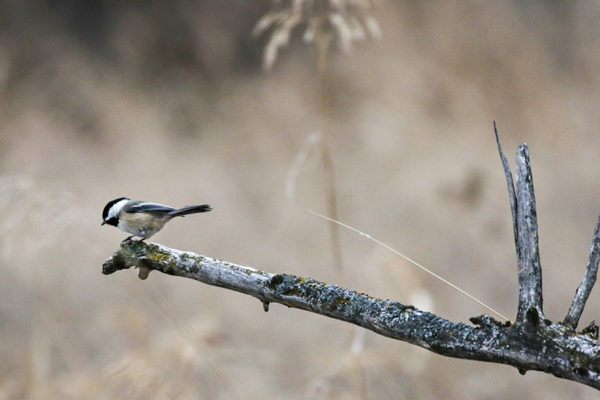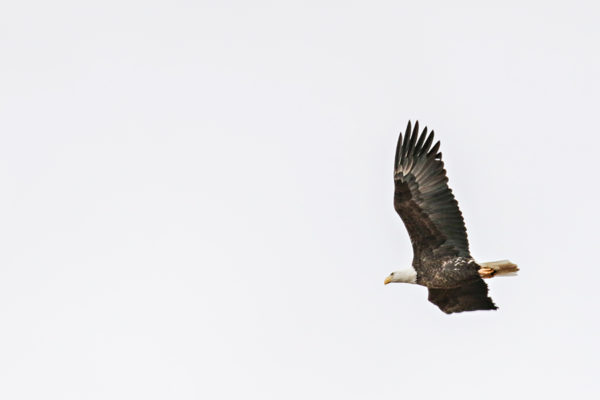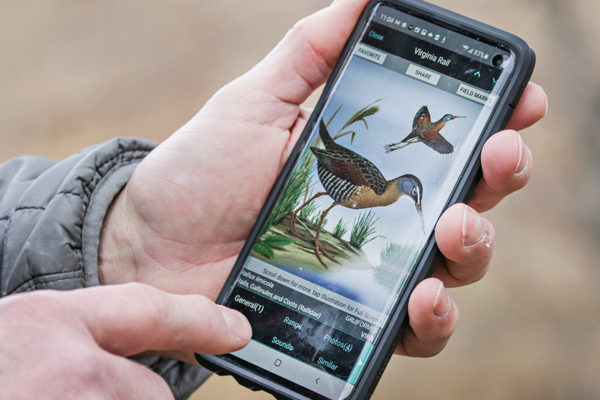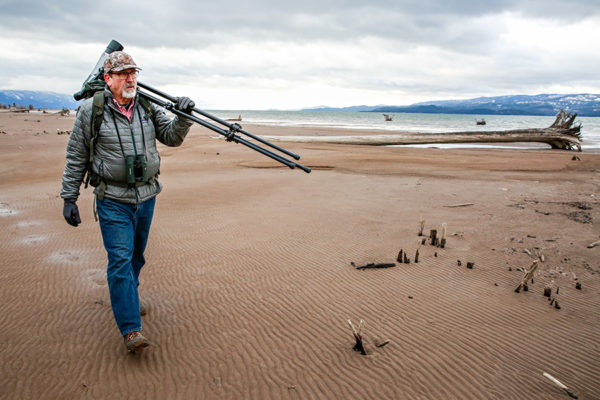PSEW-PSEW-PSEW-PSEW-PSEW-PSEW-PSEW
Retired ornithologist Dan Casey looked through the trees on the eastern edge of the Flathead Waterfowl Production Area, waiting for something to flit among the branches in response to his call.
PSEW-PSEW-PSEW-PSEW-PSEW-PSEW-PSEW
“They usually respond well to this call,” Casey said. “It’s like a generic frequency or alarm call.”
Casey is one of thousands of bird enthusiasts worldwide taking part in the 121st annual Christmas Bird Count.
The Christmas Bird Count, which takes place in the Western Hemisphere between Dec. 14 and Jan. 5 every year, is the longest-running citizen science survey in the world.
The project began at the turn of the 20th century, when hunters used to engage in a traditional Christmas “Side Hunt,” a quantity-derived competition. In 1900, Frank M. Chapman, an ornithologist with the fledgling Audubon Society proposed a new holiday tradition of counting birds.
The first year of the count, 27 people tallied birds in a combined 25 locations across North America. More than a century later, the annual count has grown into a massive undertaking. Last winter, more than 81,000 observers submitted 2,646 counts. Due to the pandemic, observer group sizes are limited this year.
The Flathead Valley has three separate counts — Bigfork, Kalispell and West Glacier. The Bigfork count is the oldest and has taken place since 1974.

At the age of 12, Casey was already fascinated by birds. He credits a broken TV that was never replaced for getting him out of the house.
“I spent a lot of time outdoors chasing birds,” Casey said. “Then I realized I could make a career out of it.”
He attended Colorado State University and studied wildlife management before embarking on a more than three-decade career as an ornithologist, first for the American Bird Conservancy, then Montana Fish, Wildlife and Parks based in Kalispell and most recently in Billings with Ducks Unlimited.
Casey was the compiler of the Bigfork count for years and founded the Kalispell count when he thought there was enough interest from the community.
“It’s a combination of recreation and science, right, so it’s a good example of citizen science,” Casey said. “It’s such a long-term data set, and because it’s standardized, we an use it to make some inferences about how populations are shifting.”
Over the last decade, Audubon has published studies based on its data, including a 2014 report that was a first-of-a-kind comprehensive study on how climate change was affecting the ranges of nearly 600 species of birds in North America. The study showed a steady shift in the seasonal ranges of a myriad of species and predicted that more than 300 species of birds could lose substantial swaths of climatic range over the next 50 years.
“They showed that the center of distribution of species in general has shifted an average of about 35 miles north,” Casey said. “It’s incremental on a continental scale, but a very noticeable shift.”
Having been part of the Bigfork count for so many years, Casey has seen noticeable changes in the local populations as well.
“Bigfork used to have the continental high count for wild turkeys,” Casey said. “But because of urbanization and the lower number of feed lots, that number is way down.”

Casey has also noticed a substantial uptick in the number of bald eagles in the area, part of the ongoing population recovery efforts that have been underway for decades.
The Christmas Bird Count is conducted in 15-mile-radius circles, and local organizers assign volunteers sections to cover. Each counter records the number of species they identify, either by sight or sound, in their assigned locations.
Volunteers used to write down their observations by hand, but that too has evolved over the years.
In 2002, Cornell University launched an online database of bird observations called eBird. Birders can enter their observations into the app and upload them to the database, which has more than 700 million recorded observations.
The app makes data more readily available to researchers, and also helps birders keep track of their own lists.
“People keep annual lists — it’s kind of an obsessive thing for a lot of birders and I am certainly guilty of it,” Casey said. “When I enter the birds today it’ll update my county list, my state list and my life list.”

In recent years, the local Christmas Bird Counts have become an annual social event for Flathead birders. Last year, the Kalispell count had 50 participants, and Bigfork had 34.
“The count has really excellent social and educational benefits,” Casey said. “Getting people out to do this kind of stuff allows you to talk about how habitats change, and it’s a real eye opener when people come in and respond to what we’re doing.”
Casey said the biggest surprise for newcomers is the sheer diversity of species that can be observed. Casey has recorded close to 100 species in the Bigfork area in previous years.
During an hour-long walk around the WPA, Casey identified 15 different species, including a large flock of 60 tundra swans on Flathead Lake.
At the end of his walk, Casey searched along a reed-filled ditch for a house wren that another birder had seen earlier in the day.
“There is a little bit of a competitive element,” Casey said trying in vain to verify the claim. “You know you can’t get all the species in a count.”
PSEW-PSEW-PSEW-PSEW-PSEW-PSEW-PSEW
His call remained unanswered.

